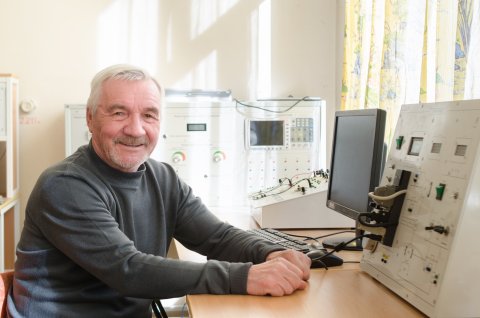Modern land, air, and space transport, as well as industrial production are impossible to imagine without electric drives. The employees of the Department of Aircrafts and Automatic Units of the SUSU Polytechnic Institute, under the guidance of ProfessorSergey Voronin, Doctor of Sciences (Engineering) are developing new algorithms of vector control for electric drives, creating small devices for heart and lung machines, and powerful electrical machines for medicine, transport devices, and industry.
Engines with Permanent Magnetic Excitation
Today almost all mechanisms in factories and plants, transport vehicles, and household appliances operate with the help of electric drives.
“The wide spread of electric drives was facilitated by a several factors. First, the appearance of devices for energy storage with a high specific indicator – batteries, which accumulate large quantity of energy in a small space. Second, new control elements appeared which make it possible to regulate large energy flows and implement difficult algorithms of control. Third, magnets with high specific energy appeared,” saya Sergey Voronin.

As with any technology, there are various technical requirements for electric drives. The main requirements are as follows: ensuring maximum efficiency, minimal dimensions, and the largest possible range of speeds and starting moments.
“But for engines with permanent magnetic excitation we see a contradiction. If we can create a large starting moment, then it is difficult to ensure great speed. Thanks to algorithms of vector control, we can ensure the speed of a valve motor with excitation from permanent magnets to be higher than the speed of the ideal no-load run, which seemed impossible just 10-15 years ago.”
New Method of Vector Control
Vector control is regulation as per angle and amplitude of two vectors – the field of the stator and the rotor. With the appearance of microprocessor controllers, the possibilities for implementing these algorithms became limitless. The main idea of vector control is to control not just the supply voltage, but the phase as well. In other words, the size and angle of the spatial vector are controlled.
“The research team of the Department of Aircrafts and Automatic Units has suggested a new, more simple method of phase control,” shares Sergey Voronin. “Unlike the complex, traditional method, we propose the regulation of the angle directly between voltage in vertical synchronous motor (VSM), connected to the current of the stator and the rotor field. By measuring this angle, we can calculate all the necessary dependencies. As a result, we obtain approximate, simple relations which are easy to regulate using a microprocessor. This makes it possible to create an exact model, which can be tested on electric drive prototypes.”

Ideas for Manufacturing and High-tech Medicine
The developments of South Ural State University researchers have already found application in industry. For example, a principally new structure of a starter-generator was created for the Chelyabinsk Tractor Plant. Another example is an engine which is built into aorta of a heart and lung machine. In partnership with Ural Electromechanical Plant (Yekaterinburg) we are developing an engine for the artificial lung ventilation. Researchers use 3D-printing to fulfill their projects and create electrical winding from light alloy, for example, for drones.
Data obtained by the South Ural researchers was presented at the International Conference on Industrial Engineering, Applications and Manufacturing, ICIEAM 2017 – Proceedings, and as a result an article was published in the conference papers included into Scopus citation database.




